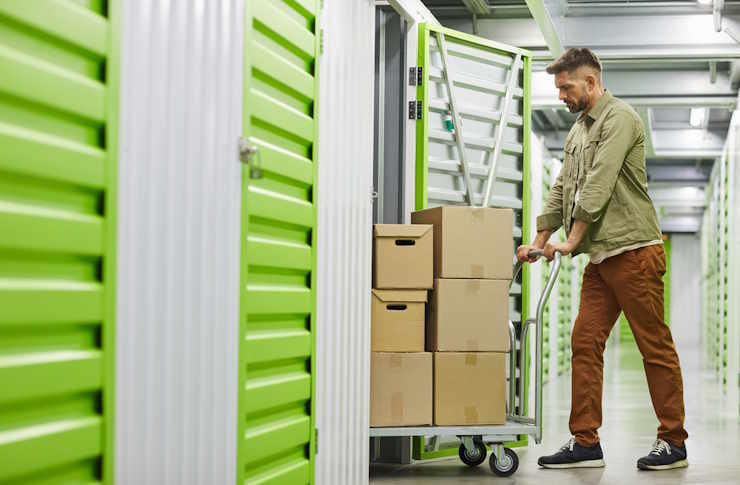Understanding the Role of Storage Service Providers
Storage companies offer space and services for individuals or organizations needing to store items outside their primary location. These services may vary in size, access methods, and security features, depending on provider and purpose. Usage can include short-term or long-term arrangements.

What are the different types of storage units and facilities?
Storage service providers offer a wide range of unit types and facilities to accommodate various needs. The most common types include:
-
Self-storage units: These are individual, lockable spaces ranging from small lockers to large rooms. They are typically accessible 24/7 and are popular for personal storage needs.
-
Climate-controlled units: These units maintain a consistent temperature and humidity level, ideal for storing sensitive items like electronics, artwork, or antiques.
-
Vehicle storage: Specialized facilities for storing cars, boats, RVs, and motorcycles, often offering both indoor and outdoor options.
-
Business storage: Larger units or warehouse spaces designed for commercial inventory, equipment, or document storage.
-
Mobile storage: Portable containers that can be delivered to a customer’s location, filled, and then stored at the provider’s facility or the customer’s property.
What are the common uses for storage services?
Storage services cater to a variety of needs across personal and professional spheres. Some common uses include:
-
Residential moves: Temporary storage during relocations or home renovations.
-
Downsizing: Storing excess belongings when moving to a smaller living space.
-
Seasonal storage: Keeping holiday decorations, winter clothing, or outdoor equipment when not in use.
-
Business inventory: Storing excess stock, equipment, or supplies for companies.
-
Document archiving: Securely storing important papers and records for individuals or businesses.
-
Vehicle storage: Safekeeping cars, boats, or RVs during off-seasons or extended periods of non-use.
-
College students: Storing belongings during summer breaks or study abroad programs.
How do access and security features work in storage facilities?
Storage service providers prioritize the safety and accessibility of stored items. Key features include:
-
Gated access: Many facilities have secure entry points requiring a code or key card for entry.
-
Individual unit locks: Customers typically provide their own locks for added security.
-
Surveillance systems: CCTV cameras monitor the facility 24/7.
-
On-site staff: Many locations have employees present during business hours for assistance and security.
-
Fire protection: Sprinkler systems and smoke detectors are standard in most facilities.
-
Climate control: Maintaining optimal temperature and humidity levels in specialized units.
-
Digital access systems: Some providers offer smartphone apps for easy unit access and management.
What factors influence the selection of a storage unit?
When choosing a storage unit, several factors come into play:
-
Size: Determining the right unit size based on the volume of items to be stored.
-
Location: Proximity to home or work for convenient access.
-
Duration: Whether the storage is needed for short-term or long-term use.
-
Climate control: Necessary for sensitive items that require temperature and humidity regulation.
-
Access frequency: How often you’ll need to visit your unit.
-
Security features: The level of protection offered by the facility.
-
Cost: Balancing budget constraints with storage needs.
-
Insurance: Whether the facility offers or requires insurance for stored items.
How do personal and commercial storage needs differ?
Personal and commercial storage needs often vary in scale, purpose, and requirements:
Personal Storage: - Typically smaller units - Often used for household items, furniture, or personal belongings - May require climate control for valuable or sensitive items - Usually accessed less frequently - Flexible lease terms
Commercial Storage: - Larger units or warehouse spaces - Used for inventory, equipment, or document storage - May require specialized features like loading docks or forklifts - Often accessed more frequently - Longer-term leases are common - May need additional services like inventory management or shipping support
What are the costs associated with different storage options?
The cost of storage services can vary widely based on factors such as location, unit size, and features. Here’s a general overview of pricing for different storage options:
| Storage Type | Size Range | Monthly Cost Range |
|---|---|---|
| Small Unit | 5x5 to 5x10 | $40 - $100 |
| Medium Unit | 10x10 to 10x15 | $80 - $160 |
| Large Unit | 10x20 to 10x30 | $140 - $300 |
| Climate-Controlled | Varies | Add 20-50% to base price |
| Vehicle Storage | Varies | $50 - $450 |
| Mobile Storage | Typically 8x8x12 or 8x8x16 | $100 - $200 per month |
Prices, rates, or cost estimates mentioned in this article are based on the latest available information but may change over time. Independent research is advised before making financial decisions.
In conclusion, storage service providers offer a versatile solution for both personal and business storage needs. From small lockers to large warehouse spaces, these services cater to a wide range of requirements with varying levels of security, accessibility, and specialized features. Understanding the different types of storage units, their common uses, and the factors that influence selection can help individuals and businesses make informed decisions when choosing a storage solution.
The shared information of this article is up-to-date as of the publishing date. For more up-to-date information, please conduct your own research.




